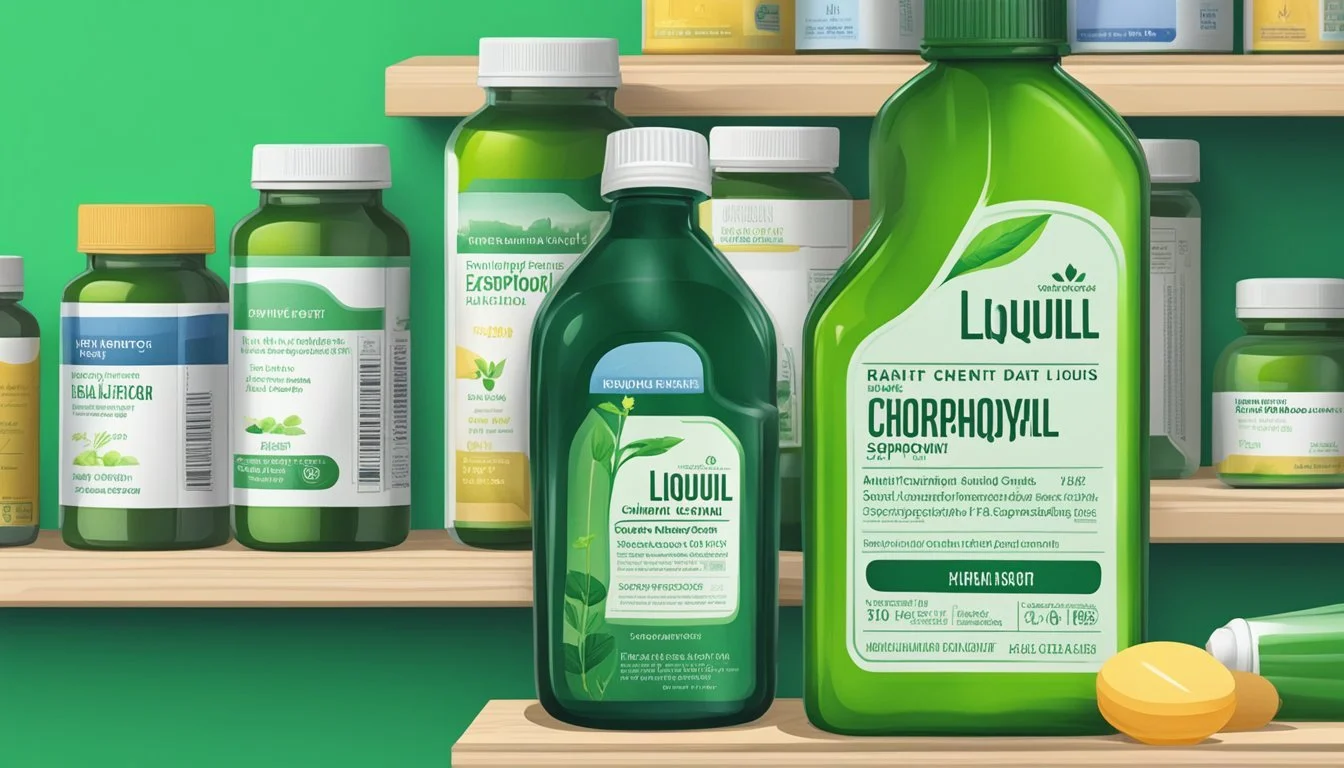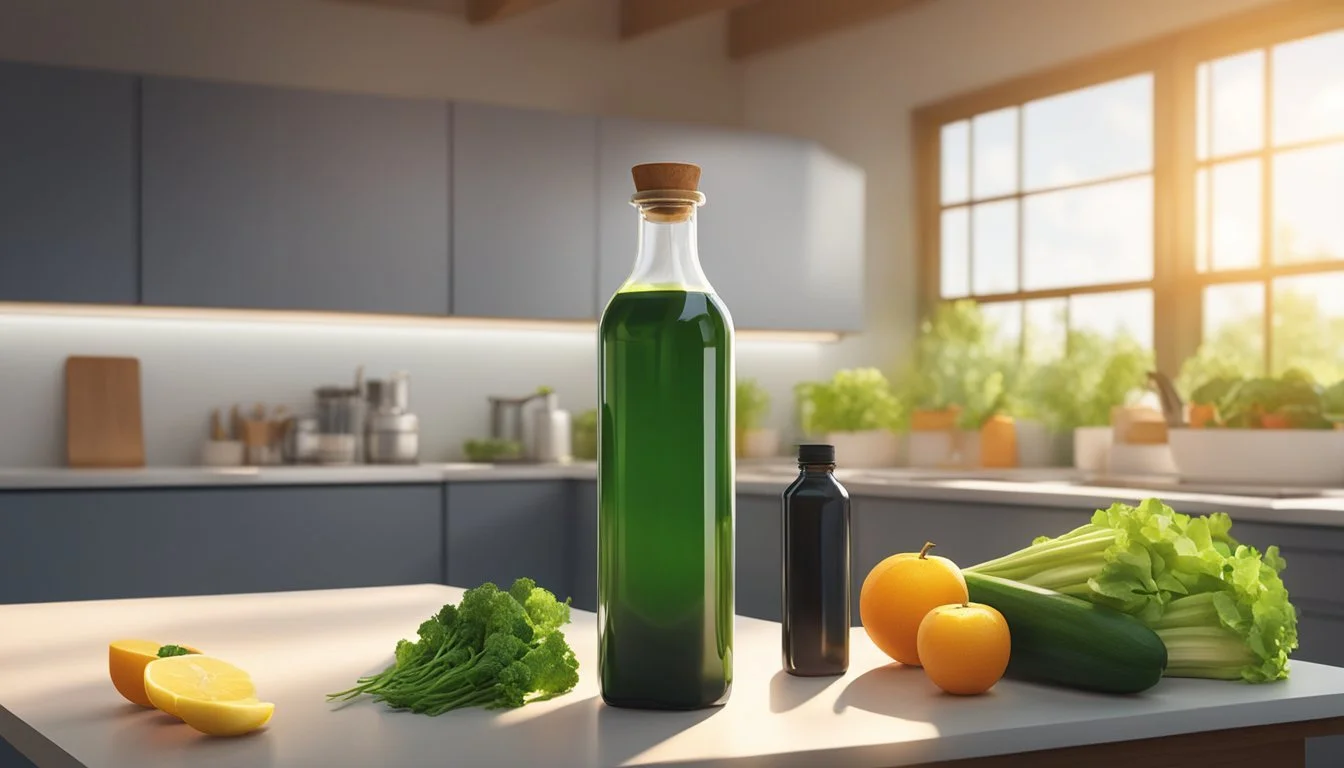How Long Does Liquid Chlorophyll Last?
Understanding Shelf Life and Storage Tips
Liquid chlorophyll is a popular dietary supplement often marketed for its potential health benefits, which range from promoting liver detoxification to supporting weight loss. As it comes in a convenient liquid form, it is easy to incorporate into daily routines, either by adding a few drops to water or other beverages. This supplement is derived from chlorophyllin, a water-soluble derivative of natural chlorophyll, which is the pigment that gives plants their green color and plays a crucial role in photosynthesis.
Consumers frequently question the shelf life of liquid chlorophyll, wanting to ensure they receive the full spectrum of purported health benefits without the product degrading or losing efficacy over time. The stability and longevity of liquid chlorophyll supplements can be influenced by various factors, including the quality of ingredients, storage conditions, and the presence of preservatives in the formulation.
While liquid chlorophyll supplements do not last indefinitely, manufacturers typically provide a 'best by' or expiry date to help guarantee their effectiveness until a certain time. Proper storage, such as keeping the bottle in a cool and dark place, can help to extend the life of the liquid chlorophyll, preventing the degradation of its potentially beneficial compounds. Consumers should adhere to the guidelines provided on the label and be aware of changes in color, smell, or taste that may indicate the product is no longer suitable for consumption.
Understanding Chlorophyll
This section provides an understanding of chlorophyll, from its fundamental aspects to its presence in natural sources, and explains the derivative used in liquid chlorophyll products.
Basics of Chlorophyll
Chlorophyll is the green pigment crucial for photosynthesis, the process by which plants, algae, and some bacteria convert light energy into chemical energy. It allows these organisms to absorb light, most efficiently in the blue and red spectrum, but reflects green light which gives them their characteristic color. Central to the chlorophyll molecule is a magnesium ion pivotal in capturing sunlight.
Natural Sources of Chlorophyll
Leafy greens are abundant natural sources of chlorophyll, with vegetables like spinach, kale, and wheatgrass boasting high concentrations. These green vegetables are not only part of a healthy diet but also serve as a direct intake of natural chlorophyll, beneficial for various bodily functions.
Chlorophyllin and Liquid Chlorophyll
Chlorophyllin is a water-soluble derivative of chlorophyll, often found in liquid chlorophyll supplements. These supplements are used for various health applications, though it's important to differentiate between natural chlorophyll and chlorophyllin, as their stability and absorption may differ. Liquid chlorophyll typically has a shelf life and should be stored properly, often in a cool, dark place to maintain its efficacy.
Health Benefits of Chlorophyll
Chlorophyll is the pigment that imparts a green hue to plants and is vital for photosynthesis. In humans, chlorophyll consumption can offer several health benefits, from skin health improvement to potential cancer prevention.
Antioxidant Properties
Chlorophyll contains powerful antioxidants which help to protect cells from oxidative damage caused by free radicals. This antioxidative action can aid in preventing cellular damage and supports overall health.
Skin and Wound Healing
Topical applications of chlorophyll have been associated with improved skin healing. Studies suggest chlorophyllin, a derivative of chlorophyll, may expedite healing in wounds and improve the condition of skin, including reducing the appearance of acne.
Detoxification and Weight Management
Chlorophyll has been linked to body detoxification. It supports the liver in detox processes, which can indirectly contribute to weight management. Some believe chlorophyll supplementation can help maintain a healthy weight, although evidence is still evolving.
Cancer Prevention Potential
Research indicates that chlorophyll and its derivatives may have anticancer benefits. While more rigorous studies are needed, some evidence suggests a protective effect against certain types of cancer, such as colon cancer and liver cancer.
Digestive and Immune System Support
Chlorophyll can support digestion and bolster immune system efficiency. Its anti-inflammatory properties may soothe the gastrointestinal tract, helping to reduce discomfort and aid in digestive health.
Usage and Dosage
When using liquid chlorophyll, it is important to adhere to recommended dosage guidelines to ensure safe consumption. Various methods are available for incorporating chlorophyll into one's diet, such as chlorophyll drops, smoothies, and chlorophyll water.
Recommended Dosage
The Food and Drug Administration (FDA) considers chlorophyllin, a water-soluble derivative of chlorophyll, safe for consumption. Adults over the age of 12 can typically consume up to 300 milligrams of chlorophyllin daily without adverse effects. These guidelines serve as a general safe range, but individuals should always consult with a healthcare provider for personalized recommendations based on their health status and nutritional needs.
Methods of Consumption
Liquid chlorophyll can be introduced into the diet in several ways:
Chlorophyll Drops: Easy to measure, chlorophyll drops can be directly added to a glass of water or any beverage of choice. Start with a small dosage, as indicated on the product label, and gradually increase if needed and tolerated.
Smoothies: Incorporating chlorophyll into smoothies is another popular method. Chlorophyll blends well with various smoothie ingredients, enhancing the nutrient content without significantly altering the taste.
Chlorophyll Water: Some individuals prefer to dissolve chlorophyll in water, creating chlorophyll water. This can be a refreshing way to consume the recommended dosage throughout the day.
When choosing a chlorophyll supplement, ensure that it contains chlorophyllin rather than raw chlorophyll, as chlorophyllin contains copper which is crucial for stability and might be more easily absorbed by the body. Always follow the specific instructions provided by the manufacturer of your chosen chlorophyll product.
Safety and Side Effects
When considering liquid chlorophyll as a supplement, it's important to be aware of potential side effects and safety concerns. Although generally considered safe for most people, some may experience adverse reactions.
Common Side Effects
Some individuals may experience common side effects which include:
Diarrhea: Loose stools may occur, typically subsiding within a day.
Stomach Cramps: Mild discomfort may be noticed after ingestion.
Change in stool color: The green pigment may alter the color of stool.
Change in urine color: Similarly, urine might also become discolored.
Precautions and Risks
Several precautions and risks are associated with liquid chlorophyll:
Blood thinning: Those on anticoagulants like warfarin should exercise caution as chlorophyll might affect blood clotting.
Interactions with drugs: It may interfere with medications, for instance, methotrexate used in treating cancer and autoimmune diseases.
Photosensitivity: An increase in sensitivity to sunlight could be a risk, leading to potential skin reactions.
Safe Consumption Practices
To ensure safe consumption practices:
Follow dosage recommendations: Exceeding the suggested amount increases the risk of adverse effects.
Quality control: Opt for supplements approved by the FDA or third-party tested for purity.
Consult healthcare providers: Those with conditions like trimethylaminuria, responsible for body odor, should seek medical advice, as it may impact the effectiveness of chlorophyll as a deodorant.
By adhering to these guidelines, consumers can minimize the risks associated with liquid chlorophyll and benefit from its potential health-promoting properties.
Shelf Life and Storage
The longevity and efficacy of liquid chlorophyll are highly dependent on appropriate storage and adherence to recommended usage timelines. This section dives into the specifics of how to store liquid chlorophyll, factors affecting its shelf life, and indicators of spoilage.
Proper Storage Conditions
Liquid chlorophyll's stability is contingent on maintaining certain conditions. Refrigeration is recommended after opening to retard bacterial growth and preserve the product's quality. To ensure maximum potency, one should keep it in a cool, dark place away from direct sunlight and heat, as these elements can accelerate degradation.
Shelf Life Determinants
Several factors contribute to the shelf life of liquid chlorophyll:
Manufacture date: Typically, unopened liquid chlorophyll has a shelf life of up to 2 years from the date of manufacture.
Storage after opening: Post-opening, its quality remains best for 6 months to 1 year; the exact time frame depends on the brand's formulation.
Packaging integrity: Exposure to air and light can reduce shelf life, so it is important to ensure the container is properly sealed after each use.
Signs of Degradation
To determine if liquid chlorophyll has degraded, one should look for:
Changes in color: A shift from vibrant green towards brownish hues can indicate spoilage.
Off-putting odor: A sour or unpleasant smell is often a clear sign that the product should not be consumed.
Texture alterations: Any noticeable change in consistency might suggest bacterial growth or breakdown of the liquid chlorophyll.
By closely monitoring these aspects, one can ensure they are utilizing liquid chlorophyll within its optimal time frame, thus enjoying its benefits fully.
Dietary and Lifestyle Considerations
When considering the shelf life of liquid chlorophyll, it's essential to address both dietary intake and lifestyle choices. These factors can influence how and why an individual might supplement with chlorophyll.
Chlorophyll in the Diet
A varied diet rich in green vegetables such as spinach, green beans, broccoli, asparagus, and peas naturally provides chlorophyll. Algae like spirulina and chlorella are concentrated sources, often used in dietary supplements. Such natural sources come packed with fiber, vitamins, and other beneficial compounds. It's in the produce aisle that one can find many of these fresh options to incorporate into their meals. In addition to being fresh, these dietary sources do not require consideration of shelf life in the way supplements do.
Lifestyle Factors Influencing Supplementation
An individual's lifestyle choices might dictate their supplementation needs. For example, someone with limited access to fresh produce or a strict diet may consider a dietary supplement to ensure they meet their nutrition targets. When deciding to supplement with liquid chlorophyll, they should take into account factors like the supplement's expiration date, proper storage conditions — typically a cool, dark place — and the recommended dosage. Regular consumption as per guidelines can help to maintain its efficacy within its shelf life.
Cultural and Social Perspectives
In examining the cultural and social perspectives on liquid chlorophyll, two areas stand out: its presence on social media platforms like TikTok and the scientific community’s contributions to its understanding and use.
Chlorophyll Trends in Social Media
TikTok has been instrumental in propelling the popularity of liquid chlorophyll, with many users sharing their experiences and the perceived benefits of this supplement. High-profile TikTok influencers often tout it as a natural remedy for various health issues, which contributes to its trending status across social media platforms more broadly. This surge in popularity often mirrors broader health and wellness trends that prioritize natural and plant-based supplements.
Institutional Research and Recommendations
Research institutions such as Oregon State University and the Linus Pauling Institute have not specifically addressed the shelf life of liquid chlorophyll. However, their general advisories focus on evidence-based health benefits and risks associated with chlorophyll and chlorophyllin, a semi-synthetic derivative. These institutions recommend caution and suggest following manufacturer guidelines for dosage and shelf life. They provide an anchor of scientific credibility amid the sea of social media claims, though direct guidance on the lifespan of liquid chlorophyll remains limited in academic literature.
Conclusion
Liquid chlorophyll is a popular dietary supplement known for its health benefits and natural origins. When considering its shelf life, it is important for consumers to understand the various factors that influence how long their chlorophyll supplement will last.
Shelf Stability: Typically, unopened liquid chlorophyll has a shelf life ranging from one to three years, depending on the brand and the preservatives used. However, once opened, it should be consumed within six months for optimal benefits.
Storage Recommendations: To maintain its efficacy, liquid chlorophyll should be stored in a cool, dark place and kept away from direct sunlight. The refrigerator is an ideal location post-opening, and the bottle should be sealed tightly after each use.
Quality Indicators: Users should monitor color changes or off-putting smells as these can indicate spoilage. If the product changes significantly, it may be best to discard it.
Dosage and Use: It is advisable to follow the manufacturer's directions for use. The average serving is often cited as 100 milligrams per 8 ounces of water.
Health Benefits: While individual results may vary, liquid chlorophyll is touted for its potential to support energy, immune function, and digestion.
In choosing a chlorophyll supplement, one may consider products that include additional natural superfoods, enhancing the potential health benefits. Consumers should also be aware of the possibility of mild side effects, such as digestive discomfort, and are encouraged to consult with a healthcare professional before incorporating liquid chlorophyll into their daily regimen.










